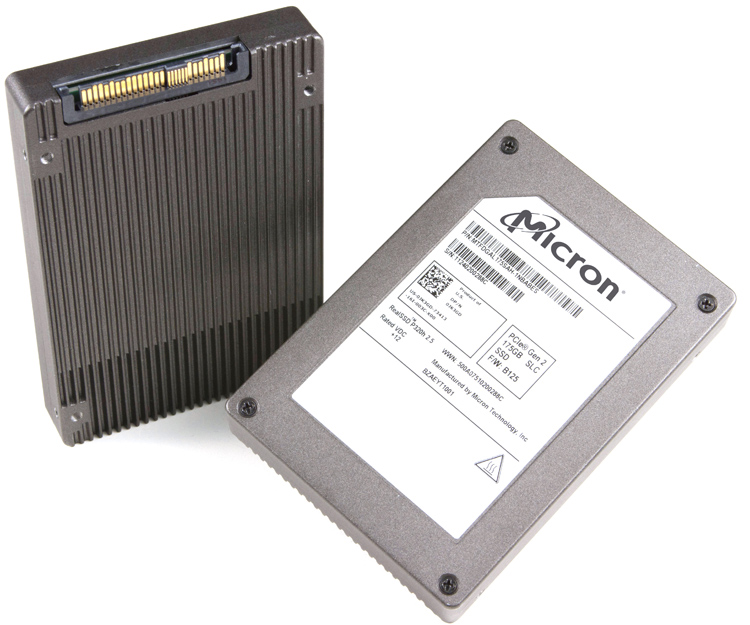Micron Technology, a major provider of flash and DRAM products, has announced the release of the very first 2.5″ PCI-e SSD.
This unique design is beneficial because it facilitates hot swapping, which is quite a boon in the enterprise environment.
By enabling the drives to be mounted in the front of a server, the 2.5″ formfactor will provide a level of flexibility previously foreign to PCI-e drives, melding easy integration and performance.
The drive is presently available and will see first use in Dell’s 12th generation PowerEdge servers. The servers will offer an exclusive, front-accessible backplane design, providing a perfect match for Micron’s new merchandise. This does, however, present a problem in which an organization will need servers specifically designed with front mounted PCI-e SSDs in mind. Considering the target market though, that’s alright, as new hardware is always being considered and business upgrade cycles are healthier than ever.
One aspect that gives Micron a potential leg up over competitors in what is sure to be a burgeoning market segment is the fact that they are providing their own flash memory. Indeed, this critical component accounts for the bulk of the cost of any SSD, and should give Micron a great deal of latitude when it comes to pricing. Certainly, this kind of cost control will be of significant interest to those controlling corporate budgets.
Another interesting factor is that, in addition to providing their own flash memory, Micron has also developed an SSD controller in house for use with this product. First seen in their P320h PCI-e SSD, this controller offers a PCI-e 2 .0 x8 interface, and puts that bandwidth to good use with up to 32 channels to flash memory. As for numbers, we’re talking 3GB/s reads and 2GB/s writes, not to mention 4k random performance of up 750,000 read and 341,000 write IOPS. Did I mention that this agile little ASIC packed a lot of performance?
One question I have, is, when are we going to see a consumer variant of this very potent processor? As companies such as Intel and Samsung have already demonstrated, in many cases, a vertically integrated approach when it comes to building SSDs can have numerous advantages, enhanced reliability being chief among them. It’s true, when the SSD design is controlled, soup to nuts, by the manufacturer, there seems to be much less of a chance of something going awry along the way. If Micron can take advantage of this and release a veritable full course meal to consumers, they may end up receiving much more than a trivial TIP.
I know I’d make a reservation!
See Press Release On Next Page……..
 The SSD Review The Worlds Dedicated SSD Education and Review Resource |
The SSD Review The Worlds Dedicated SSD Education and Review Resource | 
